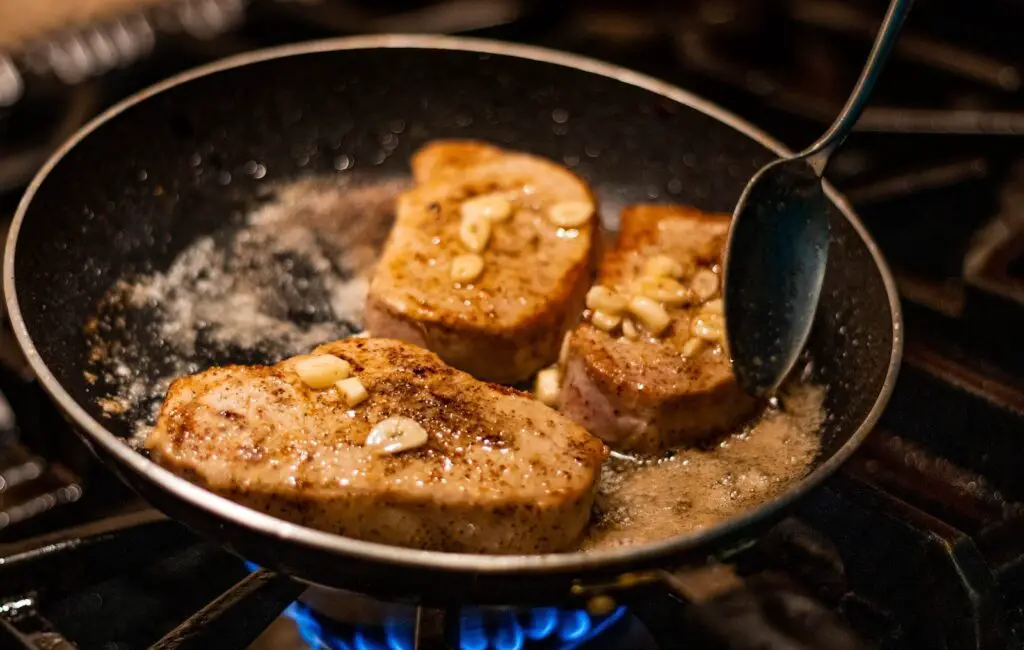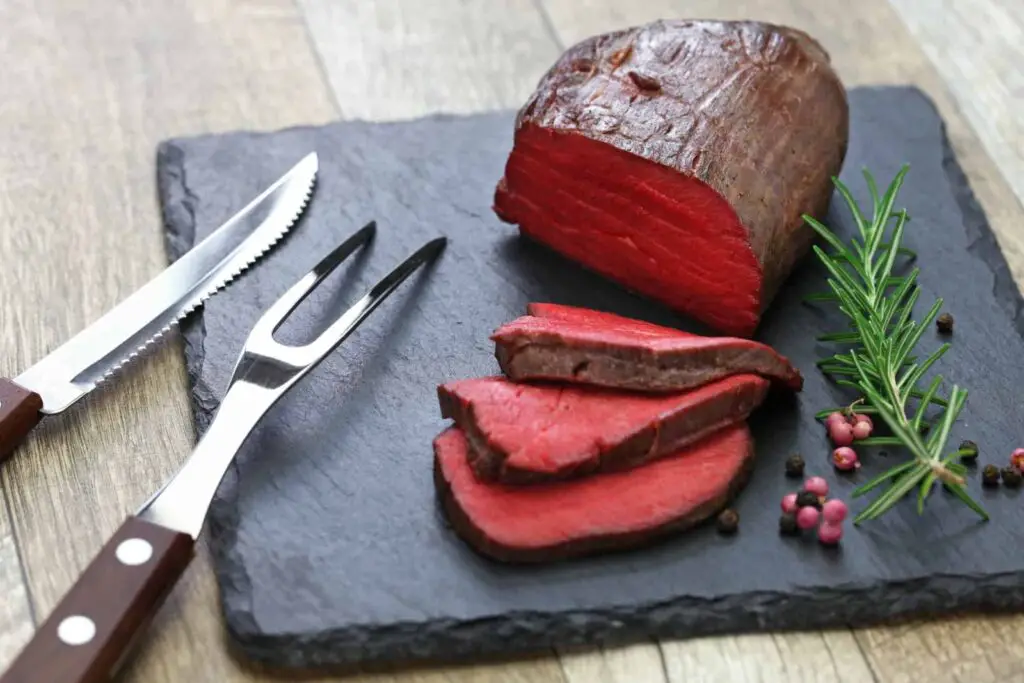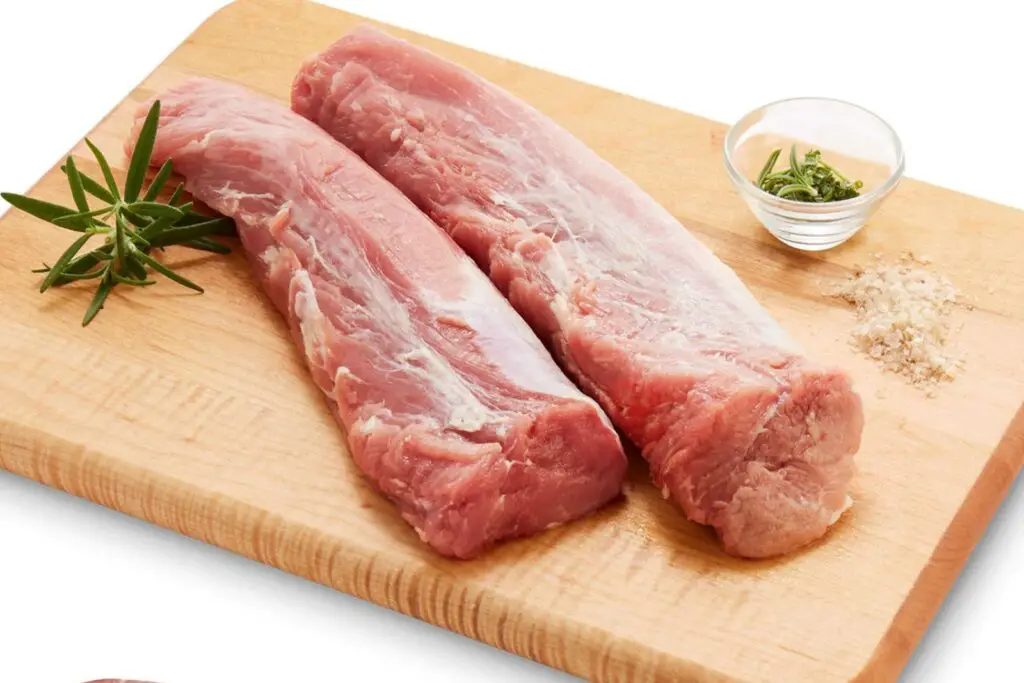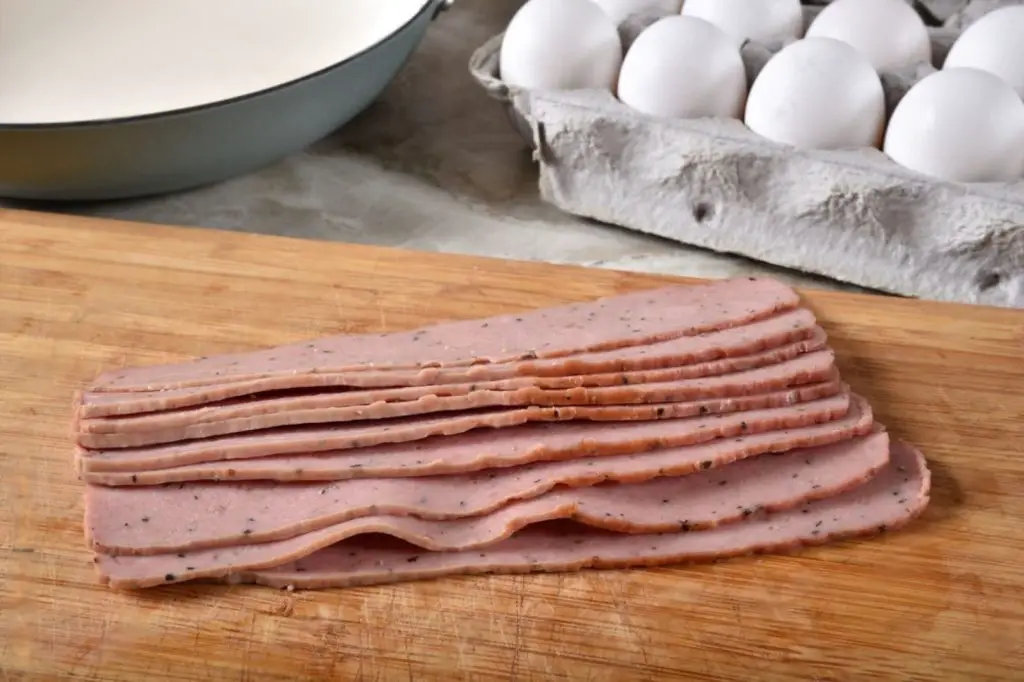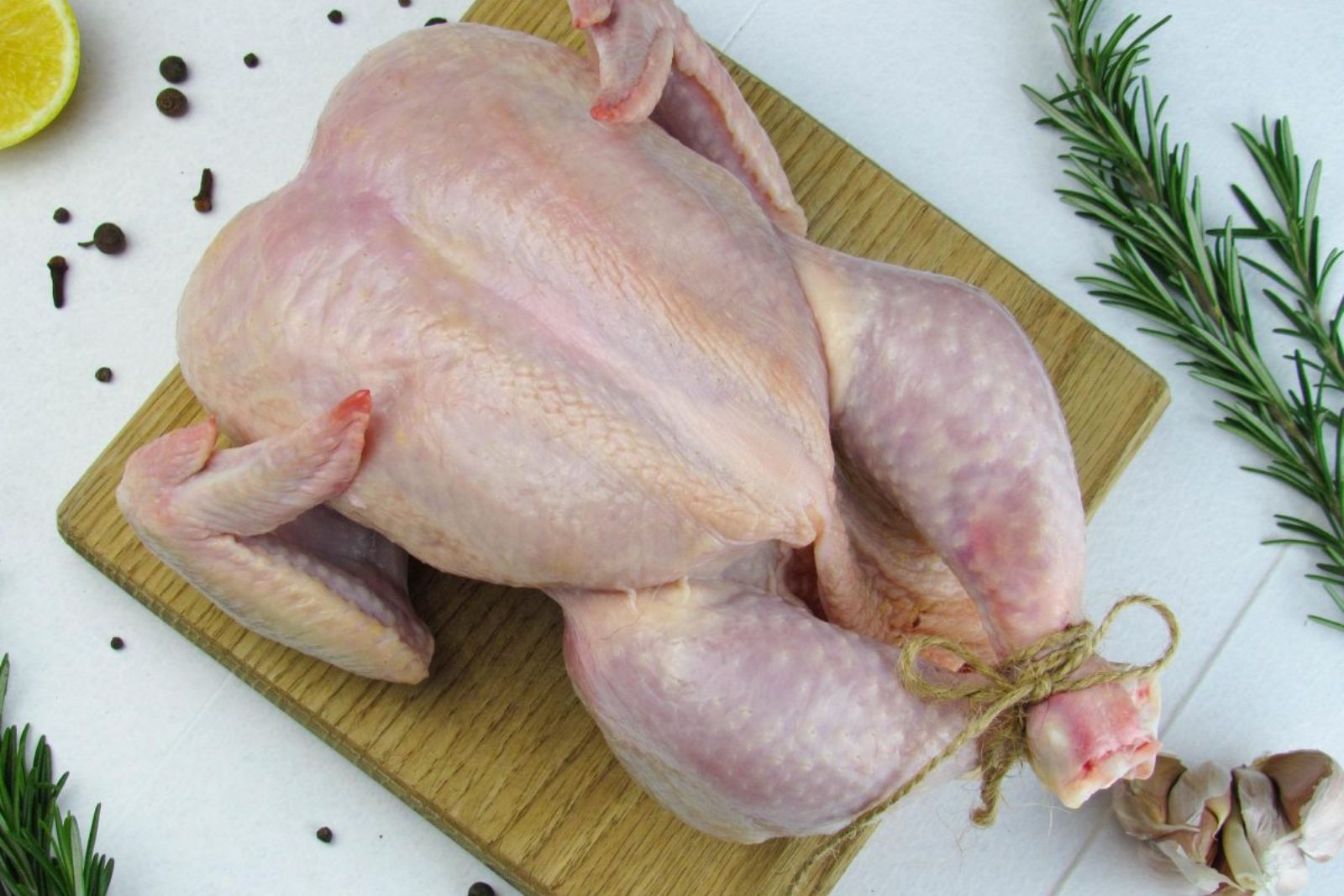
Chicken, one of the most popular and versatile meats globally, plays a central role in a myriad of cuisines, celebrated for its mild flavor and adaptability. From succulent roast chicken to spicy chicken curries, it is a cornerstone of diverse culinary traditions. However, when working with chicken, whether to stock up on sale items, prepare meals in advance, or minimize food waste, you may face the challenge of preserving its quality and taste over time. Freezing chicken is a practical and effective way to maintain its freshness and culinary appeal, ensuring that each bite retains the essence of tender poultry, ready to enhance your recipes with the convenience of perfectly frozen chicken, even when fresh cuts aren’t immediately accessible or when you crave the taste of poultry at your convenience. In this guide, we will explore the best practices for freezing chicken, allowing you to savor the richness of this widely-loved meat and elevate your culinary experiences with the essence of perfectly preserved poultry, without the need for immediate consumption or concerns about quality. Prepare to embrace the versatility of chicken, with a freezer stocked with these flavorful cuts that await to add a touch of convenience to your meals year-round.
Here are the simple steps to freeze chicken:
Step 1: Select Fresh Chicken
Selecting fresh chicken is the foundational step in the process of freezing chicken. The quality of the chicken you choose at this stage will significantly impact the taste, texture, and overall quality of your frozen poultry. Whether you plan to freeze boneless, skinless chicken breasts, chicken thighs, or bone-in pieces, there are several reasons why choosing fresh chicken is crucial:
- Quality Assurance: Fresh chicken is more likely to be free of spoilage, off-odors, or other signs of deterioration that can affect the taste and safety of the meat. When you start with fresh chicken, you have a clean slate, ensuring that your frozen chicken maintains its high quality.
- Flavor Preservation: Fresh chicken has its natural flavors intact. Freezing helps preserve these flavors, so it’s important to begin with chicken that already has a good taste. This is especially relevant for those who appreciate the distinct flavors of different chicken cuts.
- Textural Integrity: Fresh chicken has the ideal texture that we associate with poultry. It’s tender and not compromised by any potential moisture loss or freezer burn that might occur with chicken that has already been frozen or is past its prime.
- Food Safety: Starting with fresh chicken reduces the risk of foodborne illnesses. Fresh chicken typically has a lower bacterial load compared to older or previously frozen chicken, which minimizes the potential for contamination.
To select fresh chicken, consider the following tips:
- Check the sell-by or use-by date on the packaging. Choose chicken that is well within its recommended storage period.
- Examine the chicken for any signs of spoilage, such as an off-putting odor, unusual discoloration, or slimy texture. Fresh chicken should have a clean and pleasant appearance.
- Ensure that the packaging is intact and free from any leaks, which can indicate mishandling or contamination.
- If possible, buy from reputable sources, such as trusted butchers, markets, or stores with good hygiene practices, to further enhance the chances of obtaining fresh and safe chicken.
Selecting fresh chicken as the initial step in freezing is paramount to achieving a high-quality frozen product. Fresh chicken not only ensures better taste and texture but also reduces potential food safety concerns. It sets the foundation for successfully freezing chicken and enjoying it at your convenience in various recipes.
Step 2: Prep and Clean the Chicken
Essential step in freezing chicken is to properly prep and clean it. This step is crucial for several reasons and involves rinsing the chicken under cold water and patting it dry with paper towels:
- Contaminant Removal: Fresh chicken, even when it appears clean, may still have traces of contaminants such as bacteria, dirt, or other potential foodborne pathogens. Rinsing the chicken helps remove these contaminants from the surface, reducing the risk of foodborne illnesses.
- Blood and Excess Fluids: During the packaging and handling of chicken, it’s common for some blood and excess fluids to be present. These can contain microorganisms that might multiply during freezing, affecting the chicken’s quality. Rinsing and patting the chicken dry remove these fluids, reducing the chances of freezer burn and maintaining the chicken’s texture.
- Improved Freezing: Excess moisture on the chicken’s surface can lead to the formation of ice crystals during freezing, which may result in freezer burn. Freezer burn affects the texture and taste of the chicken, causing it to become dry and potentially unpalatable. Thoroughly drying the chicken helps prevent freezer burn.
Here’s how to properly prep and clean the chicken:
- Remove the chicken from its packaging and place it in a clean, sanitized sink.
- Rinse the chicken under cold running water. Do not use warm or hot water, as this can promote bacterial growth.
- Gently rub the surface of the chicken with your hands or a soft brush to ensure that any contaminants are washed away.
- Once you’ve rinsed the chicken, pat it dry with paper towels. Ensure that you dry all surfaces, including crevices and joints, to remove any remaining moisture.
- Dispose of the paper towels and any other used materials properly to maintain good hygiene.
It’s important to note that rinsing chicken is not meant to remove all bacteria or pathogens; rather, it is a preventive measure to reduce surface contaminants. Handling chicken carefully and practicing good food safety habits, such as washing hands and utensils, is also crucial in ensuring food safety.
Prepping and cleaning the chicken before freezing is a vital step to remove potential contaminants, excess fluids, and to improve the freezing process. This step contributes to the overall quality and safety of your frozen chicken and helps maintain its texture and flavor until you’re ready to use it in your favorite recipes.
Step 3: Portion the Chicken
When freezing chicken, especially if you anticipate using it for various recipes or meals, the step of portioning is a practical and strategic move. Portioning involves dividing the chicken into smaller, meal-sized parts before freezing it. This step offers several advantages:
- Convenience: Portioning the chicken makes it easier to use only the amount you need for a specific recipe or meal. This way, you won’t have to defrost an entire package of chicken when you only require a portion, saving time and reducing food waste.
- Better Freezing: Smaller portions of chicken freeze more quickly and evenly. This ensures that the chicken retains its quality and taste during the freezing process. Quick freezing minimizes the formation of large ice crystals that can damage the chicken’s cell structure.
- Versatility: Portioned chicken allows you to be more versatile in your meal planning. You can have a variety of chicken cuts or types readily available, making it simpler to create diverse dishes without committing to a whole chicken.
Here’s how to properly portion the chicken:
- After cleaning and drying the chicken (as described in Step 2), use a clean cutting board and a sharp knife to divide it into portions. Common portions include individual chicken breasts, thighs, or drumsticks. You can also cut the chicken into strips or cubes if you anticipate using it for specific recipes.
- When portioning, consider the size and quantity of chicken pieces that are typically used in your recipes. This helps ensure that you have the right amount on hand when you need it.
- Place each portion in a separate airtight container or resealable bag. Ensure that the containers or bags are freezer-safe and tightly sealed to prevent freezer burn and maintain the chicken’s freshness.
Portioning chicken before freezing is a smart approach for both convenience and food quality. By dividing the chicken into meal-sized portions, you can easily customize your cooking and avoid the hassle of thawing more chicken than you need. It’s a practical strategy that allows you to make the most of your frozen chicken while ensuring it maintains its taste and texture.
Step 4: Package and Seal
After you’ve selected, prepped, and portioned your chicken in the previous steps, it’s time to move on to the crucial step of packaging and sealing. This step involves placing your chicken portions into appropriate storage containers or bags, ensuring they are airtight and well-sealed. There are several key reasons for taking this step:
- Protection from Freezer Burn: Freezer burn occurs when moisture on the surface of the chicken evaporates and refreezes, leading to the formation of ice crystals. This process can negatively affect the texture and taste of the chicken, making it dry and unappetizing. Proper packaging and sealing help protect your chicken from freezer burn by preventing exposure to air.
- Preservation of Freshness: By sealing your chicken portions airtight, you create a barrier against external odors and contaminants that can compromise the freshness and flavor of the chicken. This preservation is especially important if you plan to store the chicken for an extended period in the freezer.
- Portion Management: Using separate containers or bags for each portion of chicken makes it easy to manage your freezer inventory. You can take out only the amount you need without disrupting the rest of the frozen chicken, reducing the risk of refreezing or thawing excess portions.
Here’s how to properly package and seal your chicken for freezing:
- If using airtight containers: Place each portion of chicken in a suitable container, leaving some space at the top to allow for expansion during freezing. Ensure that the container is freezer-safe and has a secure, tight-fitting lid. Press down on the lid to remove excess air before sealing it.
- If using vacuum-sealed bags: Insert each portion of chicken into a vacuum-sealed bag, following the manufacturer’s instructions for your specific vacuum sealer. The machine will remove air from the bag before sealing it, creating a vacuum, which is an effective way to prevent freezer burn.
- Ensure that all containers or bags are labeled with the type of chicken and the date of freezing for easy identification.
- If you’re using resealable bags, make an effort to remove as much air as possible before sealing them, although they may not create as strong a vacuum seal as specialized vacuum-sealed bags.
Proper packaging and sealing are essential steps in preserving the quality and freshness of your frozen chicken. Whether you use airtight containers or vacuum-sealed bags, these methods create a protective barrier against freezer burn and help maintain the chicken’s texture and flavor until you’re ready to use it in your favorite recipes.
Step 5: Label and Date
Labeling and dating your frozen chicken packages is a simple yet crucial step in the process of freezing chicken. It serves two primary purposes:
- Identification: Labeling the packages with the type of chicken (e.g., chicken breasts, thighs, drumsticks) helps you easily identify what you have in your freezer. This is especially useful when you have a variety of frozen foods and ingredients, as it prevents confusion and saves time when searching for specific items.
- Monitoring Freshness: Dating the packages is essential for tracking how long the chicken has been in the freezer. This is important because chicken, like all foods, has a limited shelf life, even in the freezer. The date allows you to maintain a first-in, first-out (FIFO) system, ensuring that you use the oldest chicken first and helping to prevent food waste.
Here’s how to properly label and date your chicken packages:
- Use a waterproof and indelible marker to write on the containers or bags. You can also use adhesive labels if you prefer.
- Clearly write the type of chicken on the package. For example, if you have boneless, skinless chicken breasts, label the package as “Boneless, Skinless Chicken Breasts.”
- Write the date of freezing on the package in a format that you’ll easily understand. For example, you can use the month/day/year format (e.g., 10/14/23).
- Make sure the label is legible and placed in a location that won’t be obscured or damaged during storage.
It’s a good practice to keep a log of the items you store in your freezer, including the type and date of freezing, in a separate notebook or digital document. This log can serve as a handy reference and prevent any confusion or uncertainty about the contents of your freezer.
Labeling and dating your frozen chicken packages is a straightforward but vital step in maintaining an organized and efficient freezer. It helps you quickly identify your chicken cuts and ensures that you use them before their quality deteriorates. This small effort goes a long way in reducing food waste and optimizing the use of your frozen chicken.
Step 6: Freeze the Chicken
After completing the previous steps, including selecting, prepping, portioning, packaging, and labeling your chicken, the next crucial step is to freeze the chicken. Properly freezing the chicken is vital to maintaining its quality and safety. Here’s why this step is important and how to do it correctly:
- Temperature Control: Freezing chicken at the right temperature ensures that it freezes quickly and preserves its texture and flavor. The recommended temperature for home freezers is typically set to 0°F (-18°C) or lower. At this temperature, bacterial growth is inhibited, preventing foodborne illnesses.
- Preventing Ice Crystals: Placing the chicken on a flat surface in the freezer is essential to ensure that the chicken pieces don’t stick together as they freeze. If chicken pieces clump together during freezing, they may be more challenging to separate and use individually later on. Additionally, proper spacing between packages allows for better air circulation and more uniform freezing, minimizing the formation of large ice crystals that can damage the chicken’s structure.
Here’s how to correctly freeze your chicken:
- Open the freezer door and find a flat, stable area where you can place the packaged chicken. It’s essential to make sure that the surface is level and not inclined, as this could lead to uneven freezing.
- Gently arrange the chicken packages on the chosen surface. Ensure that there’s adequate space between packages to allow for proper air circulation. This spacing helps maintain a consistent and low freezer temperature around each package.
- Close the freezer door gently to avoid disturbing the chicken or causing temperature fluctuations. It’s important to maintain the freezer’s set temperature, as fluctuations can affect the quality of the chicken.
- Allow the chicken to remain undisturbed in the freezer until it is fully frozen. The time required for freezing can vary based on factors like the size and thickness of the chicken portions and the efficiency of your freezer. Typically, chicken pieces will take a few hours to freeze completely, but it may be longer for larger cuts.
- Check the chicken packages occasionally to ensure that they are freezing properly and not sticking together. If you notice any packages sticking, gently separate them to prevent them from fusing together during freezing.
Properly freezing the chicken is the final step in ensuring its long-term quality and safety. Freezing at the recommended temperature and arranging the packages with adequate spacing are key practices to keep your chicken in the best possible condition until you’re ready to use it in your meals.
How long can chicken last in the freezer?
Chicken can be stored in the freezer for extended periods. If properly packaged and maintained at 0°F (-18°C) or lower, chicken can remain safe to eat for up to 9-12 months, though it may be safe for longer, but the quality may deteriorate over time.
Step 7: Thaw the Frozen Chicken
After successfully freezing your chicken and keeping it in the freezer for later use, the next step is thawing and cooking the chicken safely. This step is crucial to ensure that the chicken remains safe to eat, maintains its quality, and is prepared to perfection in your chosen recipe. Here’s why it’s important and how to do it correctly:
- Food Safety: Thawing chicken safely is essential for preventing foodborne illnesses. Proper thawing methods ensure that the chicken stays at a safe temperature, inhibiting the growth of harmful bacteria. Bacteria can multiply rapidly in the “danger zone,” which is between 40°F (4°C) and 140°F (60°C).
- Texture and Taste: Safe thawing also helps preserve the chicken’s texture and taste. Rapid thawing methods, such as using a microwave, can cause uneven thawing and lead to potential texture issues. Slow, controlled thawing allows the chicken to retain its quality.
Here are safe methods for thawing and cooking frozen chicken:
- Refrigerator: Thawing chicken in the refrigerator is one of the safest methods. Place the frozen chicken in a container or on a plate to catch any drips, and then put it in the refrigerator. Ensure that the refrigerator temperature remains at or below 40°F (4°C). The chicken will slowly thaw over several hours to a few days, depending on the size and thickness of the portions.
- Cold Water: If you need to thaw chicken more quickly, you can use the cold water method. Seal the chicken in a leak-proof plastic bag and submerge it in cold water. Change the water every 30 minutes to maintain a cold temperature. This method typically takes 1-3 hours for small portions.
- Microwave: Some microwave ovens have a defrost function that can be used to thaw chicken. Follow the manufacturer’s instructions for your specific microwave, and be cautious to avoid partial cooking during the process. If you use this method, it’s essential to cook the chicken immediately after thawing to avoid food safety risks.
Once the chicken is thawed, you can cook it as you normally would in your chosen recipe. Cooking temperatures and times can vary depending on the cut and recipe, so ensure that the chicken reaches a safe internal temperature of 165°F (74°C) to kill any potential bacteria.
In summary, safely thawing and cooking frozen chicken is a vital step to ensure food safety and maintain the quality of the chicken. Use recommended thawing methods, and always cook the chicken thoroughly to enjoy delicious and safe meals.
Other related questions
Can you refreeze chicken?
Refreezing chicken is generally safe if it was thawed in the refrigerator and never exceeded 40°F (4°C). If it was thawed in cold water or using the microwave, it should be cooked before refreezing. However, repeated thawing and refreezing can affect the quality of the chicken.
How do I know if the chicken has gone bad after being frozen?
To determine if frozen chicken has gone bad, inspect it for signs such as off-putting odors, freezer burn (ice crystals or dry, discolored spots), and changes in texture (excessive dryness or mushiness). If any of these indicators are present, the chicken may not be safe or palatable to consume. Always adhere to proper food safety practices and guidelines for frozen chicken to ensure its quality and safety.
Can I freeze chicken tenders that have been breaded?
Yes, you can freeze breaded chicken tenders. To do so, arrange them in a single layer on a baking sheet and freeze until firm. Then, transfer them to an airtight container or freezer bag, placing parchment paper between layers to prevent sticking.
Can you freeze chicken that has been seasoned with herbs and spices?
Yes, you can freeze chicken that has been seasoned with herbs and spices. Seasoned chicken can be frozen for future use. To do so, place the seasoned chicken in an airtight container or freezer bag, removing as much air as possible.
Is it safe to freeze chicken that has been marinated?
Yes, it is safe to freeze chicken that has been marinated. Marinating chicken before freezing can enhance its flavor. To do this, place the chicken and the marinade in an airtight container or freezer bag. Ensure that the chicken is fully coated with the marinade, and remove excess air from the packaging.



